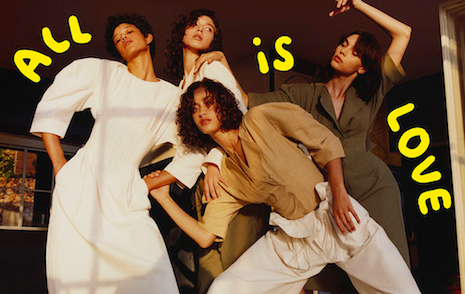 Relaxed environment. Photo credits: Johnstons of Elgin
Relaxed environment. Photo credits: Johnstons of Elgin
By Mark Izatt Luxury purchases were once status symbols above all else. For decades the luxury world seemed to be one of super-yachts, diamond-encrusted watches, It bags and big brand logos. As news of hellish sweatshop conditions, devastating pollution, animal cruelty and blood diamonds became more prevalent, luxury purchases became intrinsically linked with guilt. Over recent years, flaunting heavily branded luxury goods has been deemed vulgar by many industry-insiders, consumers and activists alike, and we have seen quieter aesthetics take the lead in response. In an increasingly pressured world, how are the reasons for luxury purchases changing? Icy reception After the financial crash and in a time of environmental disaster, it can be harder to justify luxury purchases to naysayers. Could you not have spent that money on something less frivolous? Are not luxury purchases the first thing to go when we listen to our consciences? It is becoming clear that this is not always the case. We are more aware now than ever before that cheap buys often involve cheap labor and environmental damage. It is luxury brands that are able to buck this trend. High-price points can ensure fair pay and the use of sustainable materials that are out of reach for many brands that strive to keep prices low and margins high. Now that an outspoken climate change denier is president of the United States, voted in less than a year after the historic Paris Agreement saw more countries than ever before take political action against the issue, the environment is at the forefront of our minds. Before President Donald J. Trump, millennials were already fired up by activist documentaries such as “Cowspiracy,” “Blackfish” and “Before the Flood,” and political activism was reaching a pitch unseen for decades. Now that climate change is having palpable effects, it is hard for anyone to ignore. Arctic ice is decreasing in volume by 13.3 percent per decade, leading to rapidly expanding deserts and rising sea levels that are devastating island communities and even threatening to put Florida under water in the not-too-distant future. And this is just the tip of the iceberg. It is more important than ever that luxury brands to show that they have an important place in this landscape. Herd mentality Many luxury brands have already transformed themselves in response, and many have committed to detox their production processes with help from organizations such as Greenpeace and Canopy. One of the most notable of these brands is Stella McCartney. McCartney’s brand has always been vegetarian, never making use of leather but rather innovative materials that imitate it such as Eco Alter Nappa, a water-based, solvent-free polymer coated with renewable vegetable oil. In contrast, leather manufacture requires the use of harmful chemicals such as formaldehyde, coal-tar derivatives and cyanide-based dyes and finishes. Before this process begins, there is the immense deforestation required to create pastureland for cows and the startling amount of greenhouse gas that the animals produce – primarily methane, which has 23 times the impact of CO2 on the climate. A recent film by Stella McCartney explains why the brand chooses viscose made from wood grown in sustainable Swedish forests, meaning there is no loss of habitat for endangered species. A delicate balance is struck: McCartney maintains a luxury fashion aesthetic and avoids the patronizing tone often associated with environmental messages.
 Stella McCartney: What's not to love? Photo credits: Stella McCartney
Stella McCartney: What's not to love? Photo credits: Stella McCartney
 Mark Izatt is a luxury planner at Cream
Mark Izatt is a luxury planner at Cream
